John L. Stein May 25, 2023 Drive Online
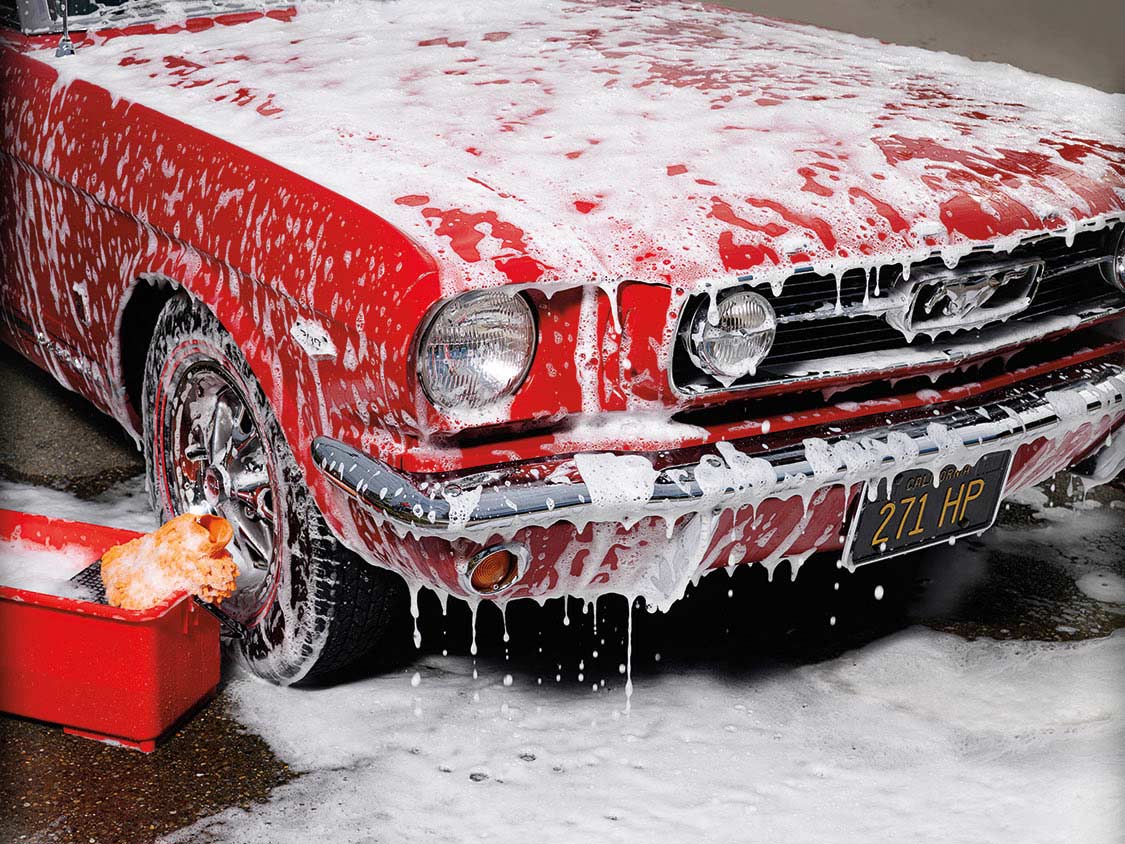
What do a slammed 1950 Merc and a 2015 Mustang have in common? Besides four wheels, a steering wheel and a loud pedal, not much—except their paint. Ah, paint. Aside from a nice set of wheels, nothing announces your arrival better than a well-manicured topcoat. Although the old lacquers and modern base-coat/clear-coat finishes are miles apart in technology, maximizing their brilliance is actually a fairly common process. Whichever type you have, here is Maximum Drive’s four-step guide to pampering the finish on your car.
If you have access to soft water, use it. Start with a gentle spray-down to float loose contaminants away, and then prepare a carwash solution in a bucket. Whether to use a specialty carwash product or a liquid dish detergent is your call, but know that detergents will strip off the existing wax layer. Use a clean carwash mitt, liberally soaked in your bucket, and wash from the top down. Rinse the mitt frequently and take care to not scratch the paint in dirty areas like behind wheel openings and along rocker panels. Dry with a clean real or synthetic chamois. Work in the shade on cool surfaces for best control and results.
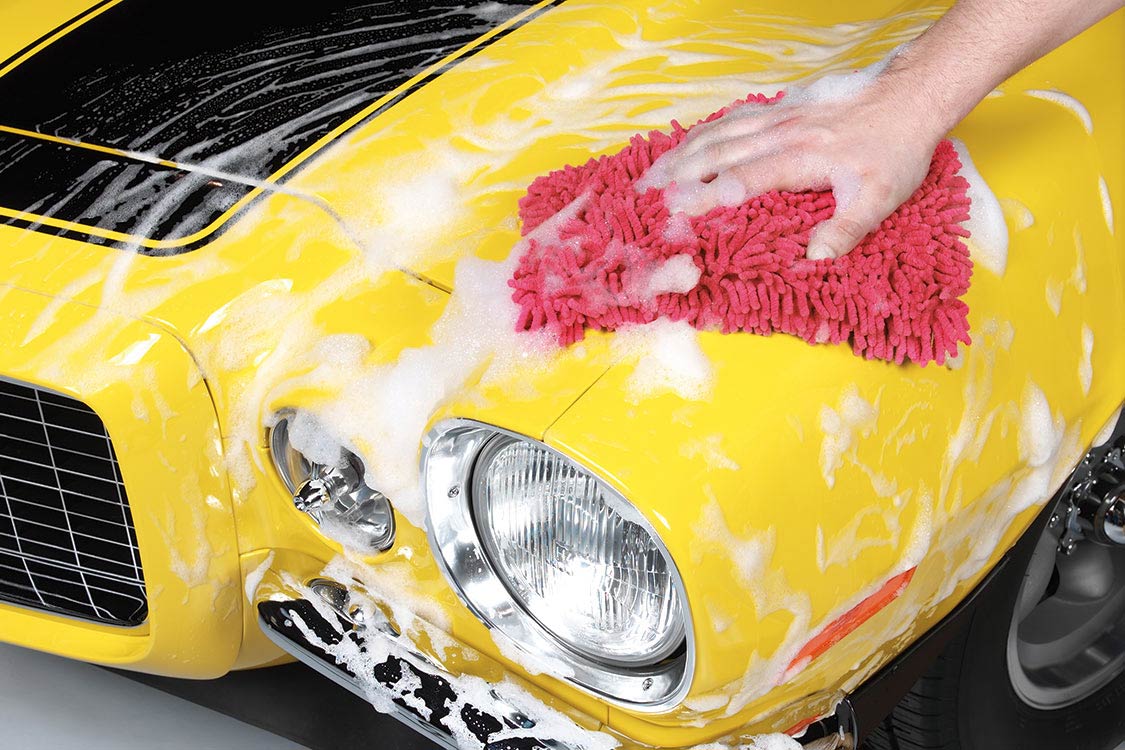
After washing your car, ensuring that the paint surface is smooth is essential. To determine if it is, run your hand gently along the body surfaces after washing. If there is noticeable drag, the paint needs to be clayed. This involves rubbing a lubricated clay block across the body panels to absorb microscopic elements including hard-water residue, pollutants and embedded road grit. Daunting as this process may sound, it takes just minutes. And the benefit is dramatic.
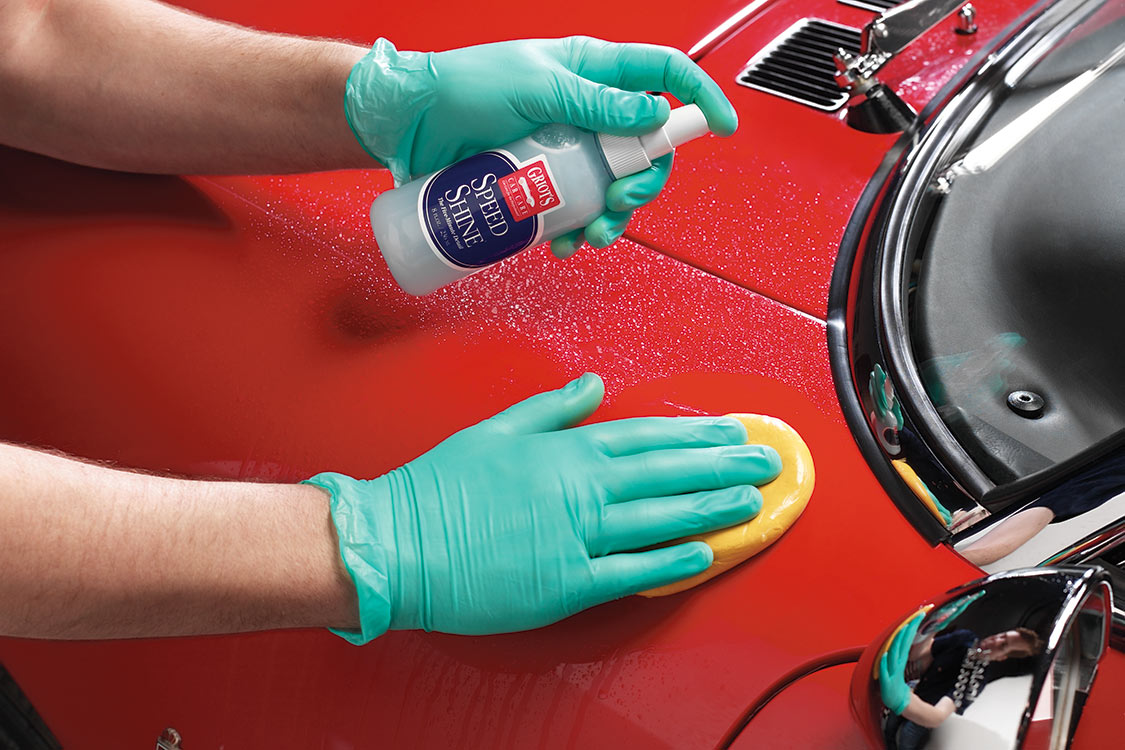
Here is where the choice of products really counts. Old-school polishing compounds can nicely remedy oxidized non-clear-coat paint, but for modern clear-coat finishes, all the “cutting” is done chemically. In this case, for best results use a modern dual-action buffer and light pressure. Such machine polishing of clear coats demands special attention, as these finishes are abrasion sensitive. And here’s a pro tip for detecting swirl marks that can appear in your paint from improper buffer use: Stand on the opposite side of your car from the sun and look at the sun’s reflection in the paint. Swirl marks will present as elliptical scratches around the reflection.
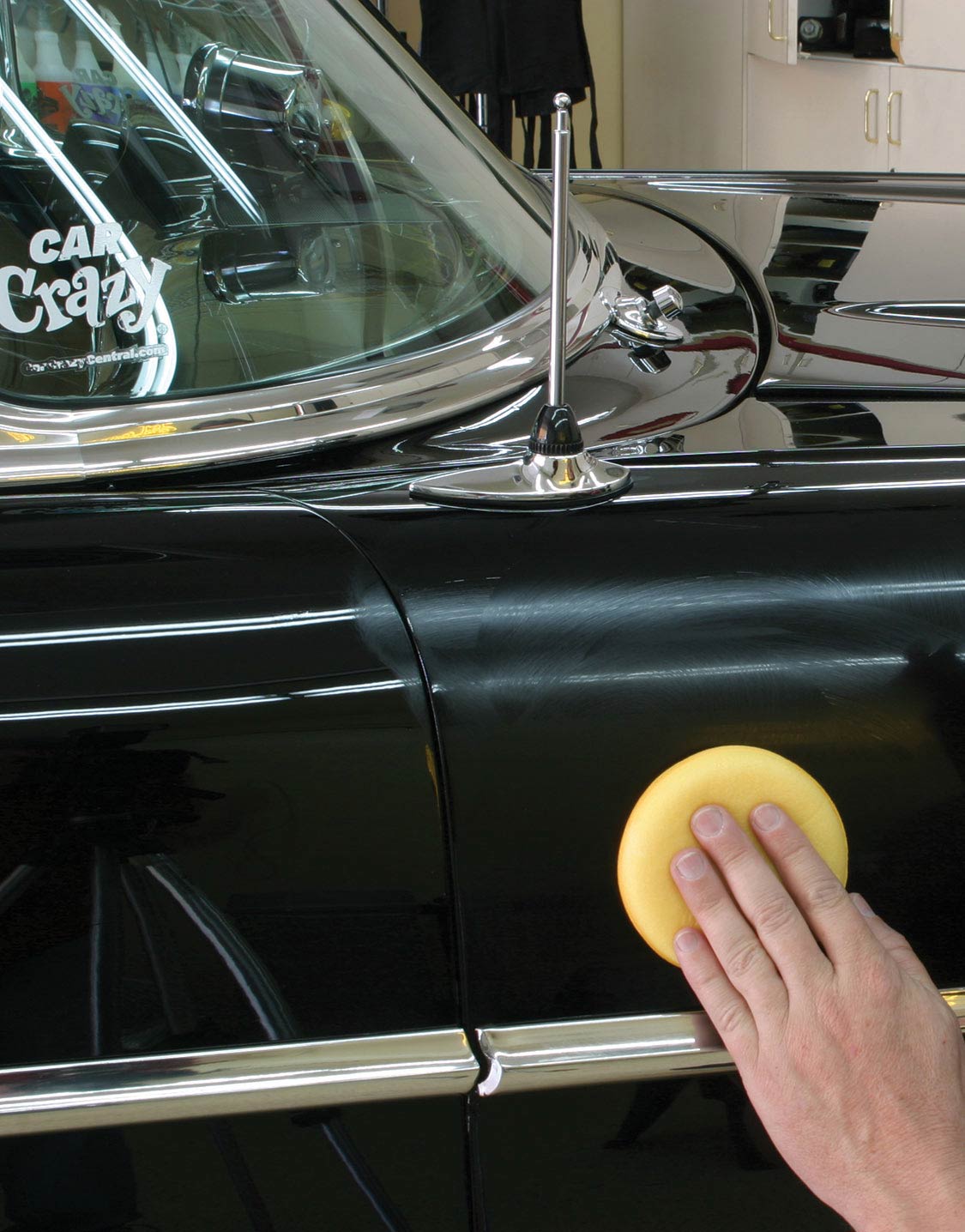
After the polishing is complete, your ride should be close to having a great shine. The final step of waxing can be done either by hand or by using a dual-action buffer. For best results, apply the wax to one paint section at a time—such as the hood, trunk lid, one fender or door. Then fold either a deep-pile cotton terrycloth towel or a clean microfiber towel into four sections. Once the wax has dried to a haze, wipe it off with the first cloth surface, then turn to a new cloth panel and make a second pass.
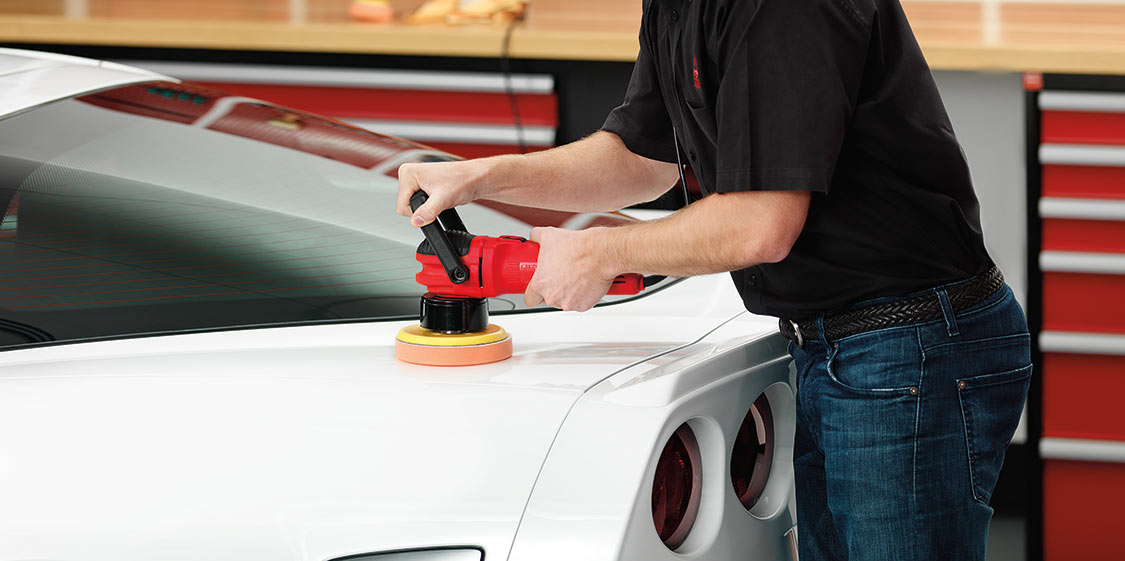
You’re done—now go enjoy.
The 1-2-3-4-step paint-care process really works, particularly if you remember to do it away from harsh, hot sunlight. Having a big supply of clean microfiber towels is a huge asset here. All the companies below sell them, or they can be purchased in bulk at some retail stores. Shake out, refold and replace as needed while working, then throw in the washing machine (not with your good clothes!) to get ready for next time.